Reportage
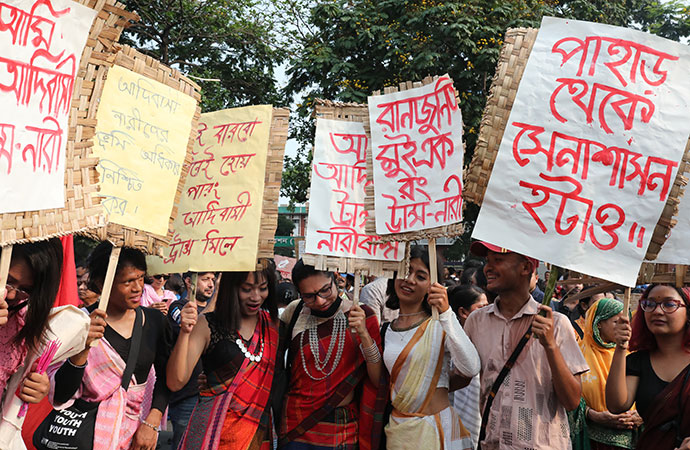
Photo: Md. Rakibul Hasan/ UNB
It is almost axiomatic, but let's start by saying that women in the Indian Subcontinent have been subjugated for millenia, since time immemorial. That holds true for other regions of the world too of course, but each region sees its particular manifestation of the patriarchy and ours is particularly loathsome for its prevalence of misogyny. Violence against women, which rather pathetically has its own acronym now (VAW), is never too far away - be it on social media, in public transport, or even in our homes.
There is no region of the world where the patriarchy isn't entrenched. Today, there is greater recognition that it isn't simply unjust from women's point of view. By now it is well-established that it has acted as a drag on human societies and progress. You shouldn't, arguably, need hundreds or thousands of years or any formal studies and even an organised movement like feminism, to realise that you can never meet your potential while undermining the efforts of 50% of your population. It just doesn't compute. Even a rock could do that math, you would think. But that's what it took to expose the almost unspoken agreement or understanding on which the patriarchy operates and sustains itself.
Look, no man ever sat at a table with half a dozen or any other number of his fellow men and signed any pledge or decree to forever subjugate women, committing all men from then on to do everything in their power to deliver a win in some historic race, maybe an evolutionary race*. There is no new committee or yearly meeting to discuss progress, no renewal of vows to keep the fight going. The silent nods and looks in the eyes (or less) on which it operates suggests a more primal genesis, that has now become second nature. As men, we instinctively know in every situation what the requisite action or intervention would be, in order to sustain the patriarchy. Instinctively. No one needs to tell us. We are conditioned towards it, as are many women, as we all know. It need not be spoken, never. If we admit it to be a pernicious force, we must concede the need for radical action to redress it.
To encourage women's political representation, Bangladesh instituted temporary special measures (TSMs) by reserving a certain number of seats for women at all levels of government - national and local. This is in accordance with the Convention on the Elimination of All Forms of Discrimination Against Women, ratified by Bangladesh in 1984, which specifies that "these types of measures shall not be considered discrimination as defined in the present Convention."
The TSMs are not intended to be permanent; they are in place until women's representation can be deemed adequate without the assistance of special measures. Although women in Bangladesh can run for general seats, most women candidates opt to run for reserved seats as these are easier for women to contest than general seats. As with general seats, women contesting reserved seats may run on a political party ticket or as independent candidate.
Members of Parliament
The reservation for women members of Parliament (MPs) at the national level is 50 seats out of a total of 350 seats as per the 15th Amendment to the Constitution of Bangladesh. The percentage of women's reserved seats is therefore roughly 14 percent. Some women are elected through general seats as well, bringing the total percentage of women representatives in the 11th Parliament (2018) to 21 percent.
Bangladesh has a FPTP system for general seats in Parliament, and a single transferable vote (STV) system for women's reserved seats based on the number of seats secured by a political party. Seats are allocated in proportion to the number of general seats - as opposed to the proportion of votes - won by each party in a FPTP parliamentary election, exaggerating the disproportionality of the results of the general seats. In contrast with general seats, for which Bangladesh is divided into 300 constituencies, the whole country serves as one large multimember electoral area for reserved seats, with the general seat MPs acting as the electorate.
The Bangladesh Election Commission allocates the number of seats to each party in proportion to the general seats won and prepares a voter list for each party consisting of the general seat MPs for that party. The party presents a list of candidates, with each candidate requiring a proposer and seconder from the same party. If the numbers of candidates and seats are the same, there is no election and the reserved seats are filled as per the list prepared by party leaders. If there are more candidates than seats for the party, the general seat MPs vote by ranking their parties' candidates using a STV system. If a party nominates fewer candidates than they have seats, the remaining seats can be contested by all parties.
In practice, the STV system has never been used. The reserved seats in Parliament have never gone to vote in Bangladesh because party leaders have nominated only as many candidates as there are available seats for each party. Even if an election for reserved seats were held, the STV used may not be a true proportional system, because each voter (MP) votes for candidates within his or her party only, and thus it becomes more of a "personal vote" system for MPs.
Upazila Parishad
The elected leadership of the Upazilas in Bangladesh is chosen in two separate ways. In the first instance, a direct FPTP election is held for the Upazila Parishad positions of one general seat chair, one general seat vice chair, and one women's reserved seat vice chair. All three positions are contested in the same electoral area with the same electorate, but with separate ballots for all three. The percentage of seats reserved for women is one-third, or 33 percent.
However, the three positions are not equal, as the chair has higher status than the two vice chairs. In the 2019 elections, only five women were elected to the general seat chair position and no women were elected to the general seat vice chair position. In addition to the election of the chair and two vice chairs for each upazila, another method is used to fill general seats in the Upazila Parishad. The general seats on the Upazila Parishad are filled indirectly by people elected at the lowest level of government - Union Parishad chairperson and Municipality (Pourashava) mayors - who represent their union or municipality in the higher-level Upazila Council as ex officio members.
One seat for every three general seats, or 25 percent of the total number of seats on each council, is reserved for a woman. However, there are too many reserved seat holders at the union or municipality level, and so a mechanism is needed to choose the representatives for the women's reserved seats at the Upazila level.
Reserved seat members are elected indirectly with women members and councilors from the local government councils - approximately 13,500 people in the 2015 election - serving as the electorate. A multiple, concurrent plurality voting system is used, with the same electorate - all women's union or municipality reserved seat holders in the Upazila - but with separate ballots and electoral areas for each reserved seat. The Upazila is divided into electoral areas with approximately three unions or municipalities forming the electoral area for each reserved seat in the Upazila Council.
All reserved seat council members from unions and municipalities in the Upazila can nominate themselves as candidates. The exact number of reserved seats in each Upazila Council depends on the number of unions and municipalities in the Upazila, with 25 percent of the total number of seats on each council reserved for women.
The electoral system for this election is unusual in that the voter is able to vote in multiple electoral areas - even in ones where they are not from.
Union Parishad
Elections for the Union, Municipality and City Corporation Reserved Seat Council members at the local level are organized using a FPTP system with "superdistricts." This means that three general seat wards are usually combined into one larger electoral area (a superdistrict) for one women's reserved seat.
Each voter casts a ballot for both a general and a women's council seat. The percentage of reserved seats is roughly one-fourth or 25 percent of all council seats. There are currently no reservations in place for Union Council chair or Municipality/City Corporation mayor positions.
There are very few general seat female mayors or union and subdistrict chairwomen, and also very few general seat - as opposed to reserved seat - councilwomen on the various Councils (parishads). And despite the TSMs, women's representation in leadership positions in such public bodies has remained at abysmal levels.
Reform advocates and political leaders on Sunday called for substantial increases in women's parliamentary representation through direct elections rather than the current reserved seat system. They made their arguments at a seminar arranged by the platform Nagorik Coalition in the conference room of The Daily Star in Dhaka.
The discussions centered on proposals ranging from immediate implementation of 100 directly-elected women's seats to a gradual transition toward 50% gender parity in parliament.
Noted activists, political party leaders, and heads of several reform commissions were present at the seminar.
Nagorik Coalition proposals
The platform presented several proposals, including visible steps to ensure women's own electoral areas and constituencies and women being directly elected to 100 seats using a 3:1 method for 2026.
Samina Luthfa, associate professor of sociology at the University of Dhaka, presented these demands and read out their written statement.
The platform said the formation process for these 100 seats can follow the Constitutional Reform Commission's proposal. In the subsequent two elections, this ratio should be gradually changed to ensure 50% women's representation of the total parliamentary seats, it added.
At the same time, the platform demanded that political parties nominate at least 25% female candidates for general seats, which should gradually increase to 50%. The platform also demanded that in 2026, every political party must have 30% women's representation in their candidate nominations, according to the Election Reform Commission's recommendation.
"This should be progressively increased to 40% and 50% in the two following elections," says their written statement.
"By restructuring electoral areas or reorganizing responsibilities and scope of work, and following the Women's Reform Commission's recommendations for population-based representation, parliamentary seats could be gradually increased from 400 to better serve Bangladesh's vast population."
The platform further demanded that the upper house should initially have 30% representation, which should be progressively increased to 50%.
Following this, most political parties on Tuesday (Jun. 17) reached a consensus on keeping 100 seats aside for women in the next national parliament, said Vice-Chairman of the National Consensus Commission Ali Riaz.
Talking to reporters after the day's session of the commission, Riaz said there was no significant opposition, apart from one or two parties, to the idea of increasing the number of reserved seats for women.
He, however, said discussions are still going on regarding the method by which women will be elected to these reserved positions.
"After an entire day of discussion, we have yet to reach a decision regarding the mechanism of women's representation in these seats. It would be unrealistic to expect a decision on such an important issue in just one day. We hope to finalise the matter within the next week," Ali Riaz said.
He highlighted that nearly all political parties agreed on amending Article 70 to allow MPs to express independent opinions, except in cases of money bills and votes of confidence.
Besides, Ali Riaz said there was unanimous agreement on appointing opposition members to chair several key parliamentary standing committees - namely Public Accounts, Privileges, Estimation, and Public Undertakings.
President's election
The majority of political parties participating in the National Consensus Commission's second round of discussions have expressed support for changing the current presidential election process to an Electoral College-based system, although the precise form this will take is still to be decided.
The discussions were held on Thursday (Jun. 19) at the Foreign Service Academy in the capital, where representatives from various parties deliberated on three different models - all within the framework of the Electoral College system.
Abdullah Mohammad Taher, Nayeb-e-Ameer of Jamaat-e-Islami Bangladesh, told journalists that one proposed model suggests a bicameral legislature, with 100 reserved seats for women, making up a total of 500 votes for the presidential election through both upper and lower houses.
He mentioned that several participants proposed the inclusion of 76 additional votes from Zila Parishads and City Corporations.
"Regardless of the exact process, we support the extended Electoral College system," said Taher, adding, "We have also recommended that the presidential election be conducted through secret ballots. All internal elections of Jamaat are held through secret ballots; the presidential election of the country should follow the same principle."
Speaking on behalf of the Gono Adhikar Parishad, President Nurul Haque Nur said, "The method of election is still under discussion. Some have suggested incorporating Union Parishads into the Electoral College, which would add another 70,000 votes beyond the existing 576."
The commission will resume its meetings in the coming week, to try and arrive at the points of consensus that will go into making up the July Charter.






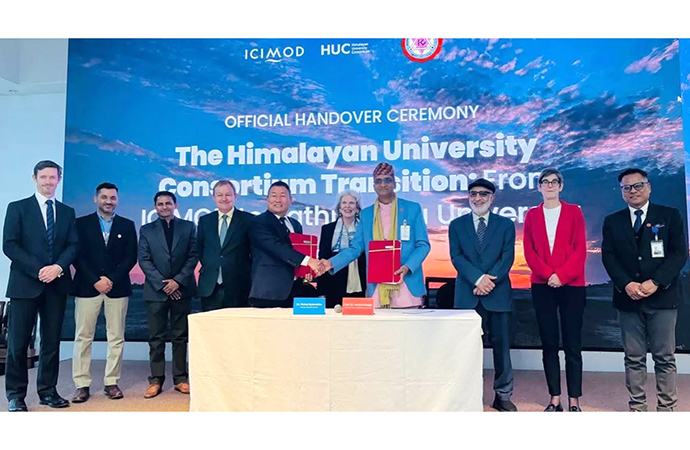
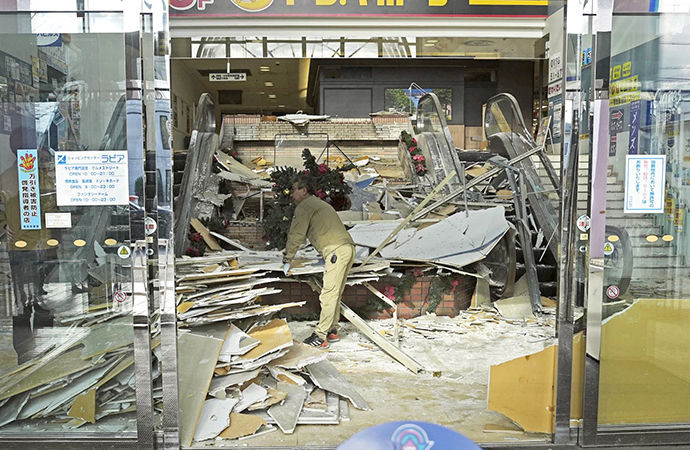

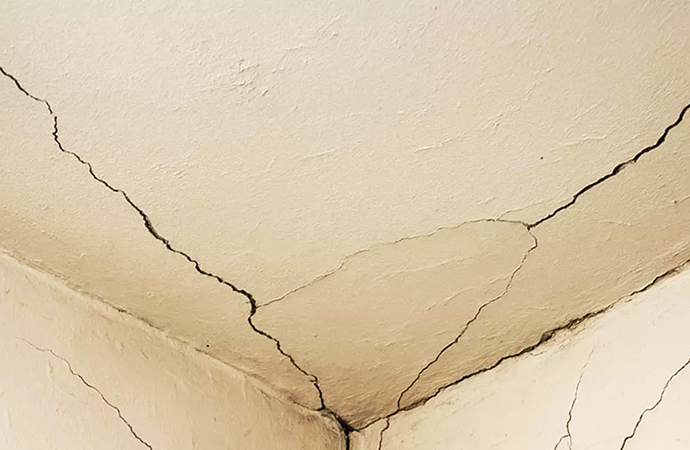
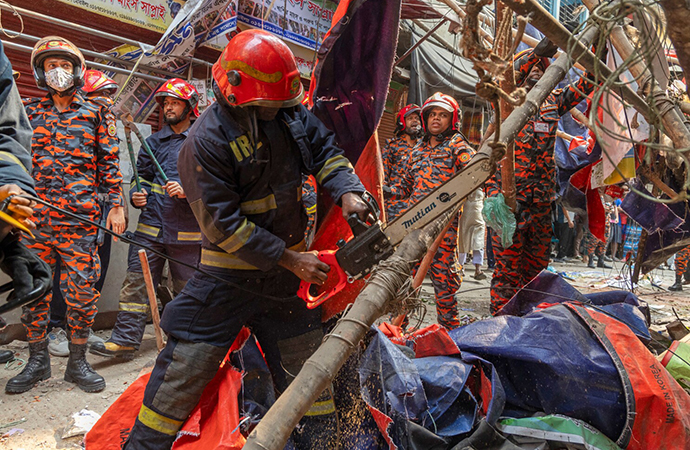
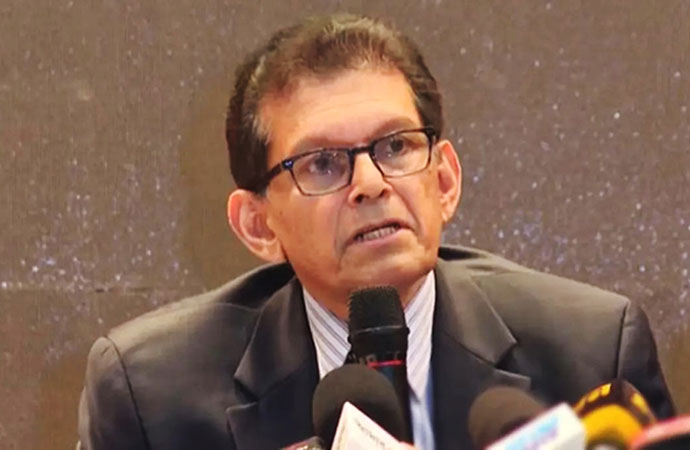
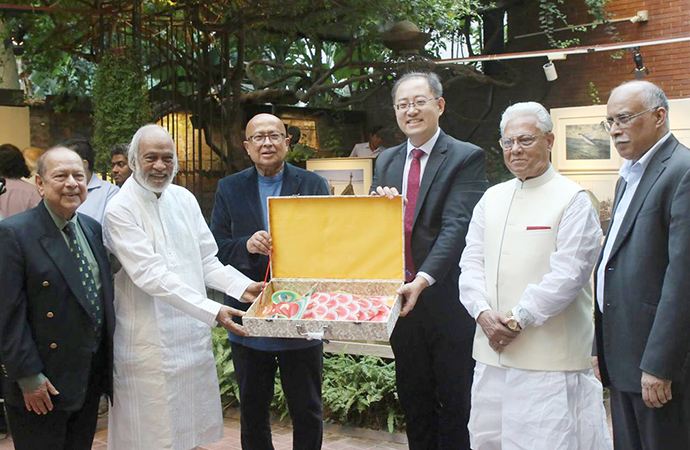


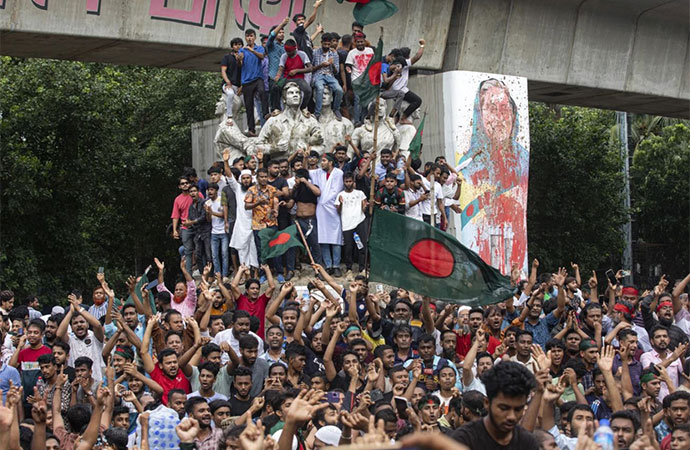
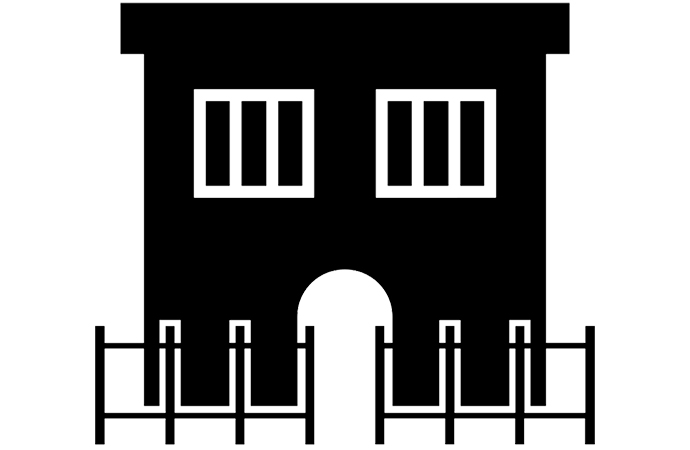

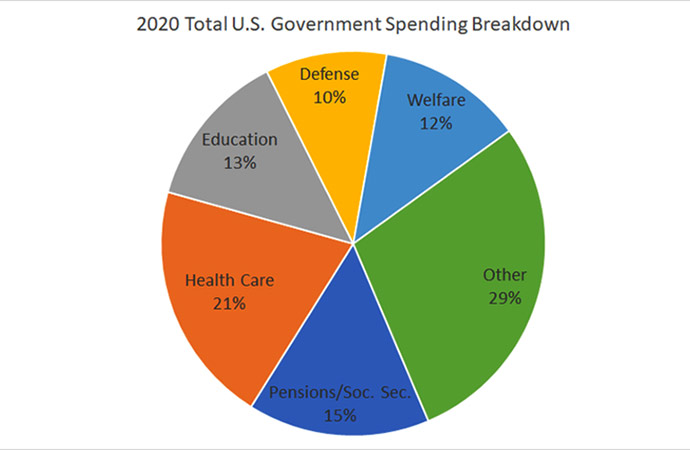
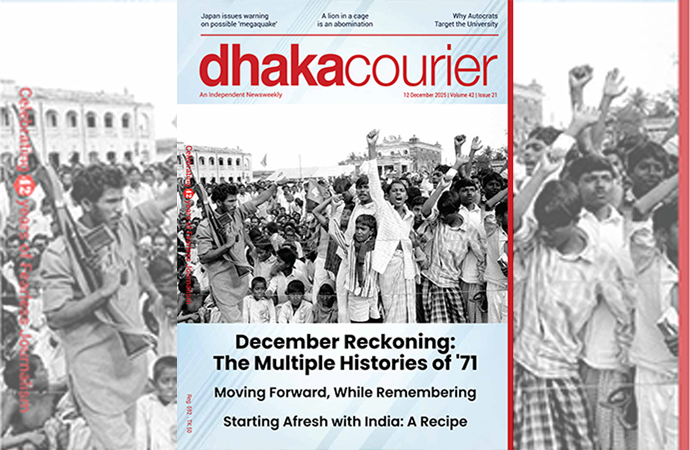
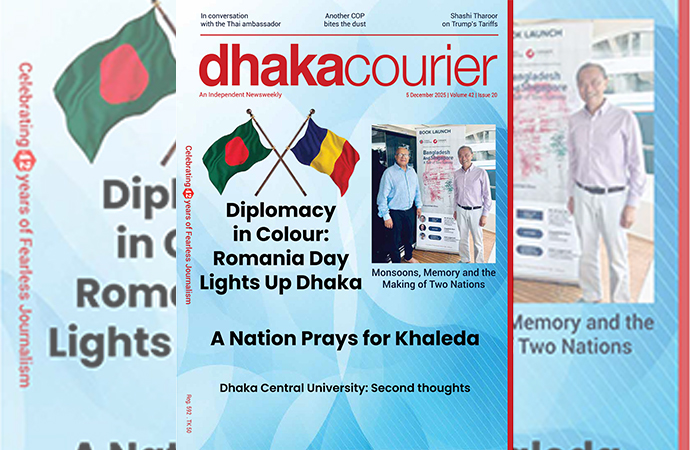

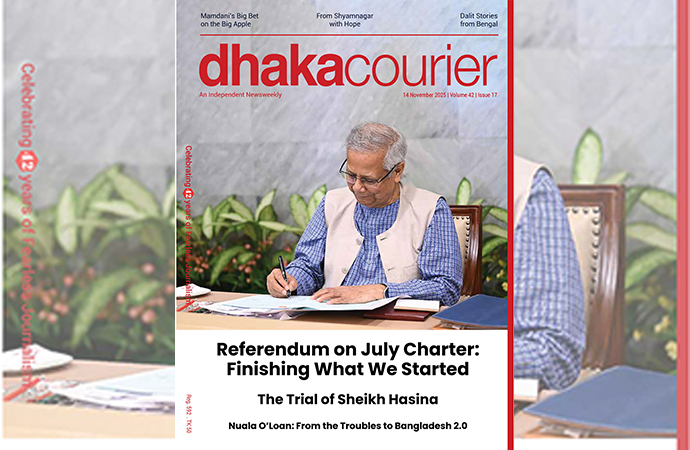
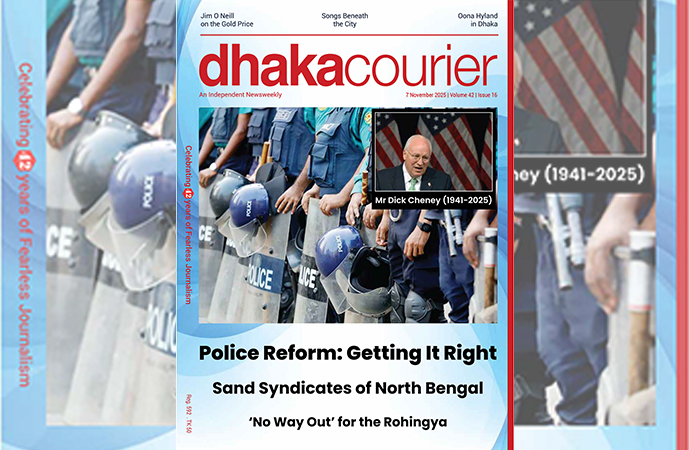
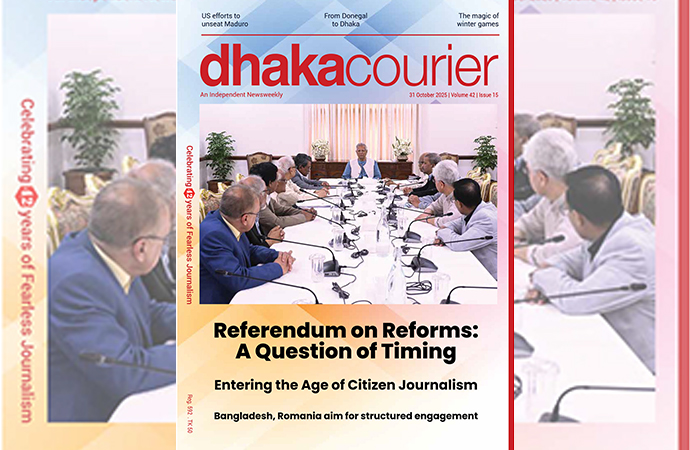
Leave a Comment
Recent Posts
Right On Schedule
The most eagerly anticipated, and frankly hyped up, announcement of an ...
Fighting raged along the borde ...
Fighting raged along the border of Cambodia and Thailand, with explosi ...
ICIMOD drives regional cooperation to inspire new mo ..
The Cage of Captivity and the Cry for Freedom: A Cru ..
Why Japan issued an advisory for a possible megaquak ..
The Autocrats’ War on Universities